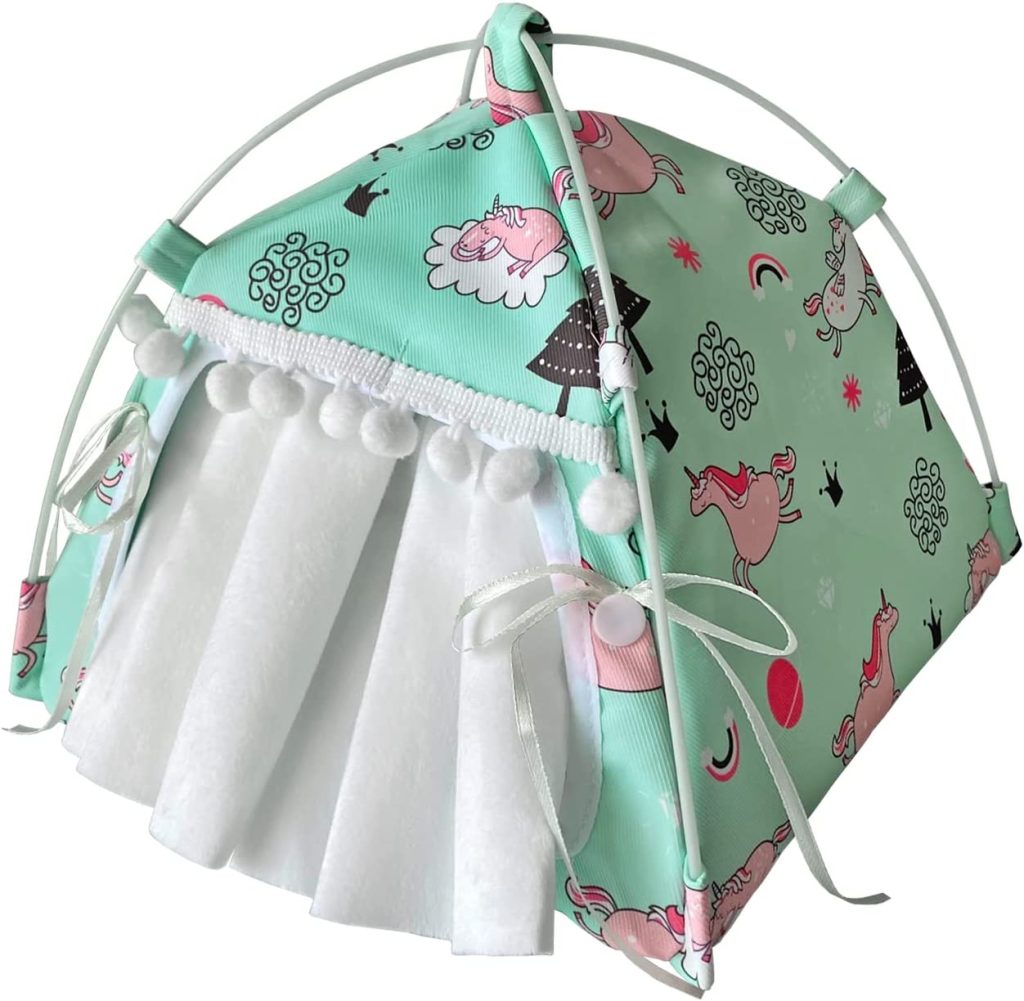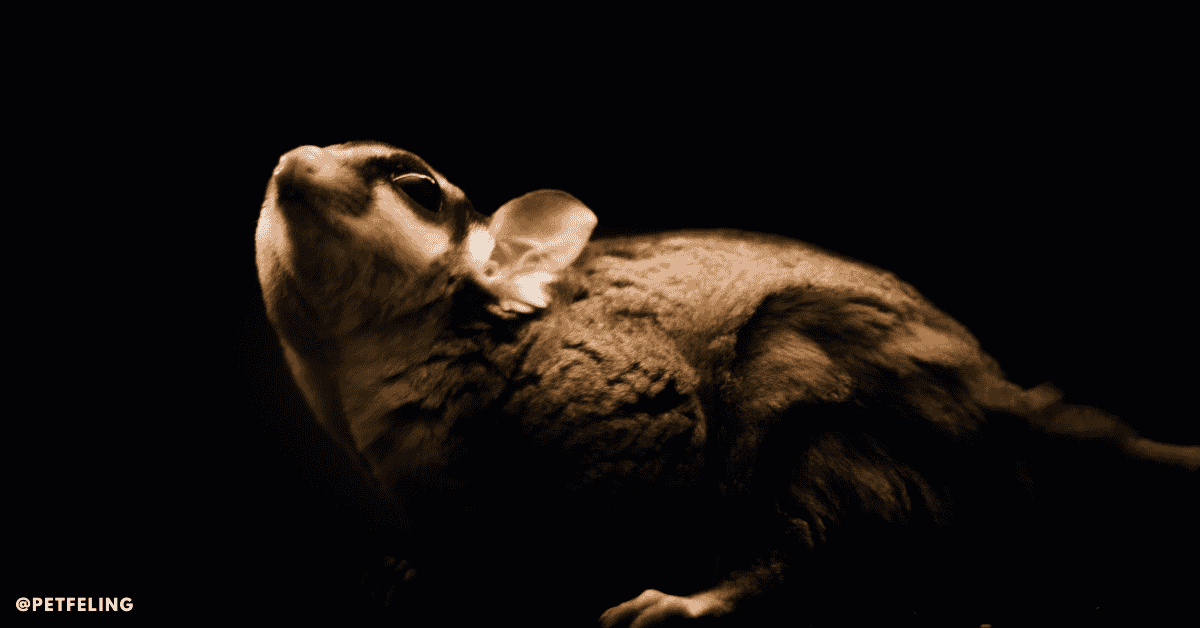One of the most incredibly satisfying feelings that any owner could possibly have is when a Sugar Glider has properly bonded to its new family. The reality is that Sugar Gliders are among the loveliest pets you could ever have, which is one of the key reasons why they have become so well-liked as companion animals in recent years.
You’ve undoubtedly been looking forward to bringing your sugar glider home for a while. You’ve researched the best practices for care, purchased the necessary equipment, and the moment has come. What about the bonding procedure, though? Although you might have imagined instant cuddling, your sugar glider will actually need some time to adjust to their new environment.
How do you advance the process, then? Are there any quick tricks you can use on them? We’re just going to begin to touch on the bonding process in this special study. However, it’s vital to keep in mind that bonding is a process that takes time and doesn’t just happen overnight. I know how excited you must be to have new little ones who are all nice and bonded, so they are similar to some of the adults you’ve probably already played with.
Domesticated Sugar Gliders
Sugar Gliders, or Petauridae Breviceps, are indigenous to Indonesia and New Guinea. In the 1990s, they experienced significant growth in popularity. It took a long time to tame them to be as gentle as modern sugar gliders because at first, they were wild. Although domestication has contributed, developing a close relationship with your Sugar Glider is a crucial part of ownership. Some of the best personalities ever can be found in these cute little critters.
Allow Your Sugar Glider to Decompress
You could be overjoyed to get your sugar glider home at last. They seem so cuddly, cute, and soft that you want to cuddle them right away. As appealing as it may seem, this actually causes them a lot of anxiety. Even though their arrival was eagerly anticipated, they are still unsure of what is happening. They are only aware of a significant shift in their environment. There are a ton of unexpected sights and smells. They’ll need some time to process everything that’s new to them. It’s advised to avoid touching or mentally fatiguing your sugar glider during the first two days after they arrive at your house.
Let them rest for 3 – 4 days to acclimate to their new surroundings.
Keep in mind that they were only frightened after leaving their home. While they’re getting used to their new home, you can put a little piece of cloth in the cage that has your scent on it. The gliders will be able to get acquainted with your scent this way.
Bonding is best during the morning and afternoon.
Due to their nocturnal nature, gliders prefer to play in the late evenings and into the night. You can stay up late and watch them play in their cage, but do not attempt to remove them from it just yet. Giving your gliders snacks while they are awake can occasionally facilitate bonding. Some folks even practice “tent time” in the evenings to get their gliders comfortable night. You can stay up late and watch them play in their cage, but do not attempt to remove them from it just yet. Giving your gliders snacks while they are awake can occasionally facilitate bonding. Some folks even practice “tent time” in the evenings to get their gliders comfortable. If your gliders appear nervous or fearful, do not do these activities! You may need to take your bonding process more slowly and limit your interactions to the mornings until they feel more at ease if they are instructing you to back off.
To help your gliders become used to frequent sounds and voices, keep their cage in the area of the house with the most activity. They’ll fit in and start to feel like family pretty quickly.
Mornings & Afternoons.
They call this period “non-active time.” Although they have little trouble staying awake during the day, at night they are much less active and prefer to sleep. Your gliders can be placed on a flat surface or carried around in a bonding bag. Allowing your gliders to observe their surroundings will help them feel more comfortable. Reaching in can make them bite you because your hand is large and frightening. Avoid doing this!
Give the gliders some time to grow accustomed to your voice and presence. The best rewards to give them are live mealworms. If they do not come from the pouch on their own, do not remove them. They will begin consuming once they are at ease. Then you can carefully reach in and begin massaging their backs with a flat palm. Do this continuously for 15 to 30 minutes each day. Talk softly and move very slowly.
Evening & Night time.
Sugar Gliders are nocturnal, as was already noted. They are at their best at night and exhibit their genuine selves then! You only need to bring a tent, toys, snacks, and your gliders. You’ll want to take a seat on the ground, surrounded by toys and sweets. Your gliders will begin looking around and investigating. They can try to climb on you or rush up to you. To interact with your gliders, use toys and snacks rather than attempting to pick them up or hold them. Watch them leap like a cat if you wave a feather in front of them! Tie a piece of fleece to the tip of your finger and move the material around.
Wiffle balls, plastic bracelets, bird toys, and cookie cutters made of plastic are also favorites of gliders. Even a drinking straw that has been sharpened with a pencil can be used! Think creatively! Part of the fun is figuring out what you and your partner enjoy playing with.
If you don’t have a tent, be sure to barricade any doors that could go outside and secure any furnishings that they could access.

You can get this Portable Small Animal Bed Tents House Cave Habitat Hideout with Forest Hidey Curtain on Amazon for just $25.99
Make Introductions Slow
Each sugar glider adjusts at their own pace, and the rhyme is arbitrary. It is not a race. Some sugar gliders may warm up to you more quickly than others because each one has a unique personality and character. When you’re just beginning to bond with your sugar glider, it’s crucial to learn their quirks and body language. Observe their example and respect their boundaries if they are afraid. Don’t give up attempting to attract attention, though. When you’re initially getting to know each other, the first few weeks are crucial.
Spend Time Around Them
Your sugar glider and you can spend time together in the same space without interacting in any way. The more they become accustomed to the squeaks, commotion, and noise within the house, the better. Even after a few weeks have passed, babies are considerably more likely to become withdrawn if they are in a room by themselves with no interaction. Keep your sugar gliders in a room with moderate traffic—just enough for them to see you frequently. You want to minimize their stress while maintaining their awareness of their environment.
Talk Softly, Don’t Touch
Speak directly to your sugar glider. Approach their cage and speak softly. Well, if you have the voice, you could even sing out a quick song. Make soothing noises to calm them. The sweeter you are, the less they will tense up out of fear and more out of curiosity. Communication is greatly aided by vocal tones. They are able to recognize your good intentions despite the fact that they don’t understand what you are saying. In the beginning, you don’t have to touch them to create a bond.
Teaching your glider to ride on your shoulders
Teach your gliders to ride on your shoulders after they are more familiar with you. Snatch it up and let them approach your shoulders. For the first few times, you should keep your hand on him and pet him while he’s on your shoulders. Circulate the space as you do so. Most gliders won’t jump if you’re moving. Therefore, stopping in front of their cage is the best option! Open the door so that you can lead them inside. After winning a round, hang your arm out of the cage’s open door to try again! They’ll want to cling to your arm once more and circle the room once more. You instruct them to come by doing this.
Respect Their Body Language
There is no need to hurry. Give it some time. Pay attention to their non-verbal signals. When you touch them, do they run away from you, hide in the corner, or become incredibly tense? Observe how they respond. Until they show signs of wanting to be touched, try to maintain a hands-off posture. You will gain their trust more quickly if you follow their lead more often than they do.
Give them snacks
You know how they say you can get to a man’s heart through his stomach? Your sugar glider is no exception. They will not refuse a nice treat. Give them a snack or two to entice them to come out of hiding. In the first several weeks, offer it occasionally but not excessively. Be careful not to introduce anything that can upset their stomachs too quickly. A stomachache and a change in scenery will be a huge overload for your sugar glider.
Use Bonding Pouches or Hoodie Pockets
You may think of some really creative ways to carry your sugar gliders. Because they enjoy climbing, you can wear one or keep one in your hoodie pocket. Even bonding pouches made specifically for transporting pets are available as mentioned earlier. Your sugar glider will feel closer to you if you hold them close. They won’t feel exposed and vulnerable when you’re holding them if they feel cradled. They may start adapting to your fragrance and come to believe in you.

Conclusion
At different times, each sugar glider will form bonds with you. One of a pair that you purchased on the same day may warm up more quickly than the other. This behavior is typical and expected. Just make an effort to spend as much time as possible with them at first as they adjust to everything that is new. They’ll become more demanding of your attention as they become accustomed to all the familiar sights, sounds, smells, and sensations around them. These strategies can be combined to see which is most effective for your sugar gliders.
It all comes down to having some good, old-fashioned patience. In the beginning, you must comply with their demands. The secret to connecting is to make your baby feel comfortable. Once your sugar glider is confident in your trustworthiness, they will want a lot of attention. Although it may be tempting to attempt to speed things along, remember that the more time you spend talking to people at their level, the friendlier they will be.
FAQ Section
How long does it take to bond with a sugar glider?
While some will settle down and bond with you after a short period of time, the majority will want more time—and some may even require a few months. After raising literally tens of thousands of these young animals over the past few years, I would venture to predict that “complete bonding” takes, on average, 4-6 weeks.
Is it hard to bond with sugar gliders?
Even though adult gliders take a little longer to warm up, with time and patience, they can integrate into a new household. When in strange situations, gliders can be timid or even aggressive at first. However, as they grow accustomed to the new sights, sounds, and smells, they will learn to adapt and form bonds with you.
Do sugar glider bites hurt?
Such bites almost never cause harm, but they almost always catch the victim off guard. Your sugar glider will like grooming you once you have gained its trust and created a friendship. It will lightly bite and lick you while grooming you.



